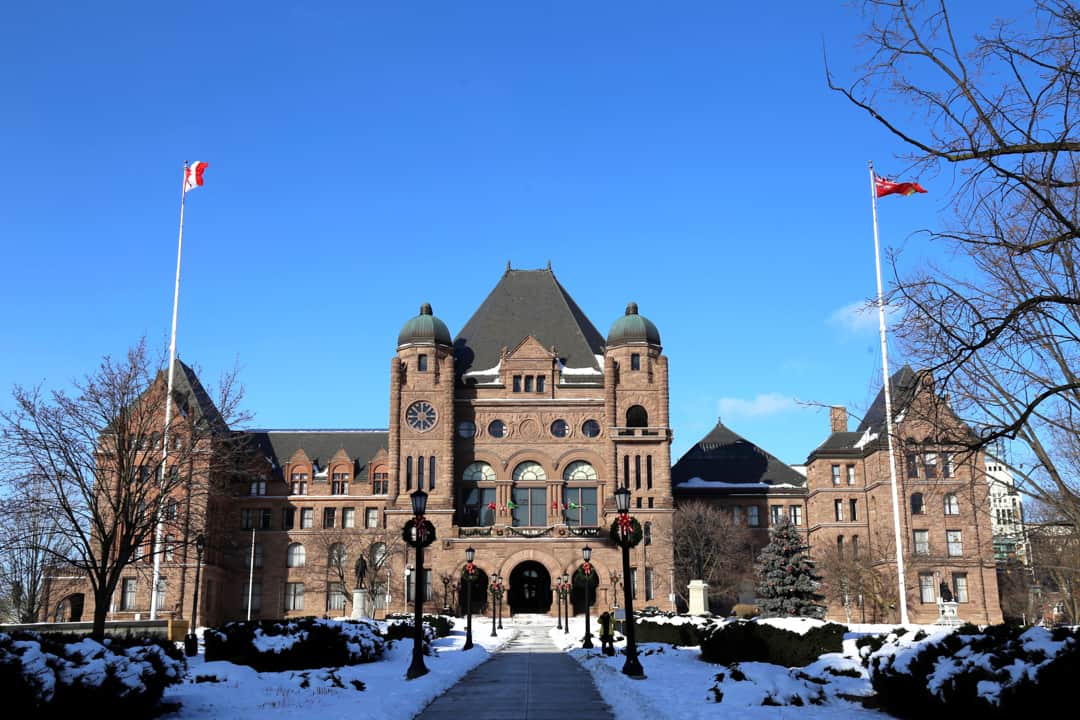A year after the Ford government announced radical cuts to domestic tuition and financial assistance, the university and the province are sitting down for negotiations of the Strategic Mandate Agreement (SMA), where the government hopes to place emphasis on students’ economic outcomes. The third of its kind, the SMA outlines domestic enrollment commitments and tuition fee structures from the university and funding commitments, based on enrollment and performance, from the province.
“As part of SMA3, we are shifting funding for universities and colleges to be more dependent on student, graduate, and economic outcomes,” wrote Ciara Byrne, a spokesperson for the Ministry of Colleges and Universities (MCU), to The Varsity. “Students deserve an education that gives them the education and training necessary for rewarding careers that address labour market needs of today and in the future.”
The province, as part of its 2020–2021 budget, announced that it would be reducing the portion of provincial operating grants to Ontario universities and colleges based on enrolment, instead opting for performance-based funding to make up 60 per cent of postsecondary funding by 2024–2025.
U of T receives nearly a quarter of its budget from provincial operating grants, of which performance-based funding makes up 1.4 per cent, soon to be up to 25 per cent for SMA3. Included in the budget announcement was the cutting of performance indicators from 28 to 10 for universities, of which one can be selected by the university.
The university has found some relief in the increasing number of international students, whose tuition costs fall under the university’s discretion, as opposed to domestic tuition, which is set by the province.
SMA2, which expires on March 31, had slowly made progress toward performance-based funding, as U of T’s announcement of the SMA2 signing reads: “While the university will still receive per-student funding from the province for both undergraduate and graduate programs, some funding will be moving into a differentiation envelope that will be based on performance.”
SMA2 had also outlined domestic enrollment for the university to decrease over the three-year stretch of 2017–2020 in response to Ontario’s changing demographics — which resulted in the university being short $88 million in its budget when the Ford government cut domestic tuition in 2019 by 10 per cent.
“Students and their families make great sacrifices to attend university and college. They have been told that if they worked hard and invested in university or college, they would find a high-quality job,” wrote Byrne. “That is increasingly not the case.”
The university boasts high performance in the new proposed funding metrics of economic outcomes of students, with a 93.9 per cent employment rate and employability rankings of 12th and 13th in Quacquarelli Symonds and Times Higher Education rankings.
TCU Minister Ross Romano told the Toronto Star that, after replacing former Minister Merilee Fullerton, he visited presidents and heads of all 45 colleges and universities in Ontario. Romano assured the Star that the metrics will not disadvantage liberal arts programs: “I wouldn’t be here if not for the arts and humanities.”
“The data is the biggest one,” Romano told the Star about what worries him the most. “Because if we do not have clean data, how can we expect institutions to be bound by these terms?”
The Varsity has reached out to U of T for comment.
Editor’s Note (January 20, 4:10pm): An earlier version of this article stated that the province would be reducing its provincial operating grants. In fact, the province will be reducing the proportion of operating grants based on enrolment, to be made up instead by performance based funding. The Varsity regrets the error.



